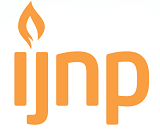Analysis Factors That Influence Associate Nurses Toward Decubitus Prevention On Bed Rest Patient In Intensive Care Unit At Ulin Banjarmasin Hospital
DOI:
https://doi.org/10.18196/ijnp.2285Keywords:
decubitus prevention, facilities and infrastructure support, fellow nurse supports, knowledge, nurse’s attitudeAbstract
Background: Hospital put patient safety as priority such as decubitus prevention to provides excellent service. The incidence of decubitus commonly occurs, such as in Western Europe generally occurs about 49%, 22% in North America, 50% in Australia, 29% in Jordan, and 33% in Indonesia. Nursing interventions to prevent decubitus is an indicator to assure the quality of nursing care. Nurses influenced by various factors toward decubitus prevention.
Objectives: Aim’s of this study is to analyze the factors that influence nurses through decubitus prevention on bed rest patient.
Methods: The population was all nurses in Intensive Care Unit at Ulin Hospital Banjarmasin (n=30) this study used a cross sectional approach. Instrument research is a questionare and abservastion sheet which adopted from NPUAP 2014. The statistical test used multiple logistic regression with significance level of 0,05.
Results: A multivariate results found that factors associated with decubitus prevention are knowledge (0,401), attitude (0,464), encouragement nurses (0,530), and facilities and infrastructure (0,530), p-value < 0,05.
Conclusions: The most related factors that influence toward decubitus prevention are knowledge, attitude, facilities and infrastructure, and encouragement nurses.
Keywords: decubitus prevention, facilities and infrastructure support, fellow nurse supports, knowledge, nurse’s attitude
References
Abebe D. (2015). Assessment of Nurses’ Knowledge, Attitude, and Perceived Barriers to Expressed Pressure Ulcer Prevention Practice in Addis Ababa Government Hospitals, Addis Ababa, Ethiopia, 2015. Advances in Nursing Journal: Volume 2015(ID 796927)
Adegoke, Odele, Akindele, et al. (2013). Pressure Ulcer Prevalence Among Hospitalised Adults in University Hospitals in South-West Nigeria. Wound Practice and Research Journal: Volume 21(3)
Altman S, Valenzi E, Hodgetts RM. (2013). Organizational Behaviour: Theory and Practice. London: Academic Press.Inc
Anders Jennifer, Heinemann Axel, Rentein-Kruse Wolfgang. (2010). Decubitus Ulcers: Pathofisiology and Primary Prevention. Medicine Journal: Volume 107 (21)
Apostolopoulou E, Tselebis A, Terzis K, etc. (2014). Pressure Ulcers Incidence and Risk Factors in Ventilated Intensive Care Patient. Health Science Journal: Volume 8
Ashford JB, LeCroy CW. (2010). Human Behavior in the Social Environment: A Multidimensional Perspective. USA:Brooks/Cole Cengage Learning available at < http://books.google.co.id/ > access on November 9th 2016
Aslan A, Giersbergen. (2015). Nurses Attitude Towards Pressure Ulcer Prevention in Turkey. Journal Tissue Viability. Volume 25 (1) available at www.ncbi.nlm.nih.gov
Asmadi. (2008). Konsep Dasar Keperawatan. Jakarta: EGC
Banks MD, et al. (2013). Cost Effectiveness of Nutrition In Preventing Pressure Ulcer. European Journal of Clinical Nutrition. Available at < www.proquest.com > access on October 30th 2016
Black JM, Edsberg LE, Baharestani MM, et al. (2011). Pressure Ulcers: Avoidable or Unavoidable? Results of the National Pressure Ulcer Advisory Consensus Conference. Ostomy Wound management. Vol 57 (2). Available in < www.npuap.org/wp-content/uploads/2012/01/A-UA-pr-ul1.pdf>
Borkowski N. (2015). Organizational Behaviour, Theory, And Design In Health Care (Second Edition). U.S: Jones & Barlet
Brindles Lee Macon, Matthew Solan. (2015). What You Should Know About Decubitus Ulcers. Healthline.
Cooper KL. (2013). Evidence – Based Prevention of Pressure Ulcers in the Intensive Care Unit. Critical Care Nurse Journal. Volume 3 No 6, 57-66
Danneshkohan A,et al. (2015). Factors Affecting Job Motivation among Health Workers: A Study from Iran. Global Journal of Science: Vol 7(3)
Deborah, Schallom M, Sona C, et al. (2016). A Model of Pressure, Oxygenation, and Perfusion Risk factors for Pressure Ulcers in The Intensive Care Unit. American Journal of Critical Care. Volume 25 No 2
Dziedzic ME. (2014). Fast Facts About Pressure Ulcer Care for Nurses: How to Prevent, Detect, and Resolve Them in a Nutshell. New York: Springer Tersedia dalam < http://books.google.co.id/ > access on October 30th 2016
Gambert SR. (2012). Contemporary Geriatric Medicine Volume 3. New York: Springer
Gillespie. (2014). Repositioning for Pressure Ulcer Prevention in Adults (Protocol). The Cochrane Collaboration. Tersedia dalam onlinelibrary.wiley.com
Green and Kreuter. (2000). Health Promotion and Planning An Educational and Environmental Approach. London:Mayfield Publishing Company
Guy. (2013). Pressure Ulcer Prevention: Making A Difference Across A Health Authority. British Journal of Nursing Vol 22 No 12
Institute for Clinical Systems Improvement. (2014). Health Care Protocol: Pressure Ulcer Prevention and Treatment Protocol.Tersedia dalam www.icsi.org access on November 9th 2016
Joseph J, Clifton DS. (2013). Nurses’ Knowledge of Pressure Ulcer Risk Assessment. Nursing Standard Journal. Volume 27(33)
Kaur A. (2013). Maslow’s Need Hierarchy Theory: Apllications and Critisms. Global Journal of Management and Busines Studies; Vol 3 (10)
King LA. (2010). Psikologi Umum Sebuah Pandangan Apresiatif. Jakarta: Salemba Humanika
Kirman CN. (2016). Pressure Ulcers and Wound care: Practice Essentials, Background, Anatomy. Medscape. Available from: Situs emedicine.medscape.com diakses tanggal 15 oktober 2016
Latimer S, Chaboyer W, Gillespie BM. (2015). The Repositioning of Hospitalized Patients with Reduced Mobility: A Prospective Study. Nursing Open Journal available at http://onlinelibrary.wiley.com/advanced/search diakses tanggal 1 November 2016
Leaker. (2013). The Role of Nutrition in Preventing Pressure Ulcers. RCNI Journals: Vol 28 No 7. Available at journals.rcni.com
Macon L, Solan M. (2015). What You Should Know About Decubitus Ulcers (online) Available at: http://www.healthline.com/health/pressure:ulcers#Overview1
Madadi ZAA, et al. (2015). The Effect of Topical Oil on Prevention of Bedsore in Intensive Care Units Patients. International Journal of Research in Medical Sciences Tersedia dalam www.mjsonline.org diakses tanggal 9 November 2016
Morison Moya J. (2004). Manajemen Luka. Jakarta: EGC
National Pressure Ulcer Advisory Panel (NPUAP), European Pressure Ulcer Advisory Panel (EPUAP), dan PAN Pacific Presure Injury Alliance (PPPIA). (2014). Prevention and Treatment of Pressure Ulcers: Quick Reference Guide. Australia: Cambridge Media
Nitisemito, Alex. (1991). Manajemen Personalia: Manajemen Sumber Daya Manusia. Jakarta: Ghalia
Notoatmodjo S. (2003). Pendidikan dan Perilaku Kesehatan. Jakarta: Rineka Cipta
Notoatmodjo S. (2012). Promosi Kesehatan dan Perilaku Kesehatan. Jakarta: Rineka Cipta
Nuru, et al. (2015). Knowledge and Practice of Nurses Towards Prevention of Pressure Ulcer and Associated Factors in Gandar University Hospital, Northwest Ethiopia. Biomedical Central Journal: vol 14 (34)
Royal College Nursing. (2005). The Management of Pressure Ulcers in Primary and Secondary care: A clinical Practice Guidelines. RCN
Sabandar. (2008). Ulkus Dekubitus. Jurnal Kedokteran Universitas Sebelas Maret
Sardina D. (2012). Why Not Call it A Pressure Ulcer?. Wound Care Advisor Vol 11(3) Available at: http://woundcareadvisor.com (access on Desember 2016)
Sunaryanti. (2014). Manfaat Pendidikan Kesehatan Reposisi Dan Minyak Kelapa Terhadap Pencegahan Dekubitus. Presented in National Seminar and Call for papers UNIBA
Sullivan N. (2013). Preventing in-Facility Pressure Ulcers As A Patient Safety Strategy. Ann Intern Medicine Journal: Volume 158
World Health Organization. (2008). Summary of The Evidence on Patient Safety: Implications for Research. Section II (10)
Yap T, Kennerly S. (2016). A Nurse-led Approach to Preventing Pressure Ulcers. Rehabilitation Nursing Journal. Vol 36. No 3. Tersedia dalam: <http://www.researchgate.net/publication/51221195> diakses pada 18 Oktober 2016
Yusuf S. (2011). Program pencegahan Dekubitus Melalui Gerakan Nasional Stop Dekubitus. (Internet). Available at: http://persatuanperawaticu.blogspot.com/2011/05/pencegahan-dan-perawatan-luka-dekubitus.html?m=1 (acces on 27 September 2016)
Yusuf S. (2015). Jurnal Luka Indonesia. Volume 1 2nd edition. page 3 – 11
Zuo XL, Meng FJ. (2015). A Care Bundle for Pressure Ulcer Treatment in Intensive care Units. International Journal Of Nursing Sciences
Downloads
Additional Files
Published
Issue
Section
License
License
Articles published in the IJNP (Indonesian Journal of Nursing Practices) are licensed under a Attribution 4.0 International (CC BY 4.0) license. You are free to:
- Share — copy and redistribute the material in any medium or format.
- Adapt — remix, transform, and build upon the material for any purpose, even commercially.
This license is acceptable for Free Cultural Works. The licensor cannot revoke these freedoms as long as you follow the license terms. Under the following terms:
Attribution — You must give appropriate credit, provide a link to the license, and indicate if changes were made. You may do so in any reasonable manner, but not in any way that suggests the licensor endorses you or your use.
- No additional restrictions — You may not apply legal terms or technological measures that legally restrict others from doing anything the license permits.
Copyright
Authors who publish with IJNP (Indonesian Journal of Nursing Practices) agree to the following terms:
- Authors retain copyright and grant IJNP (Indonesian Journal of Nursing Practices) the right of first publication with the work simultaneously licensed under an Attribution 4.0 International (CC BY 4.0) that allows others to remix, adapt and build upon the work with an acknowledgment of the work's authorship and of the initial publication in IJNP (Indonesian Journal of Nursing Practices).
- Authors are permitted to copy and redistribute the journal's published version of the work (e.g., post it to an institutional repository or publish it in a book), with an acknowledgment of its initial publication in IJNP (Indonesian Journal of Nursing Practices).














